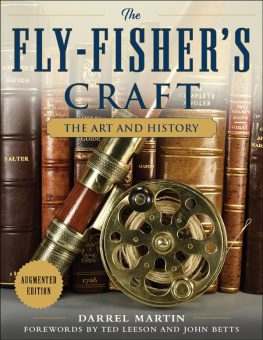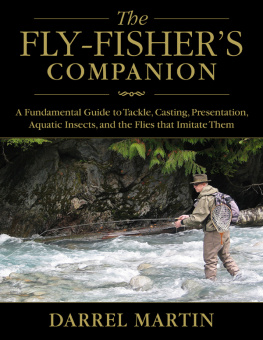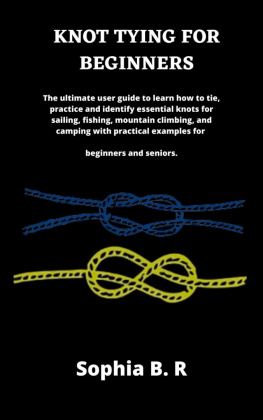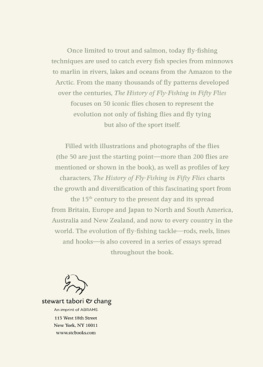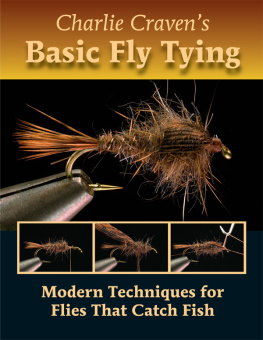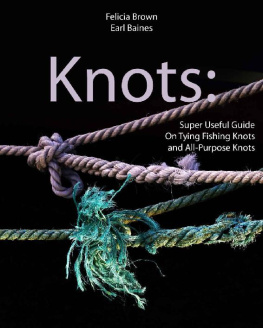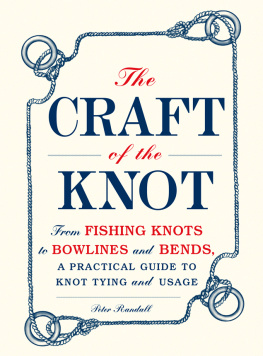BOOKS BY DARREL MARTIN
Fly-Tying Methods
Micropatterns: Tying and Fishing the Small Fly
English-Czech and Czech-English Dictionary of Fishing,
With Milan Pohunek
The Fly-Fishers Illustrated Dictionary
The Fly-Fishers Craft
Copyright 2006 by Darrel Martin.
First Skyhorse Publishing edition copyright 2016
Second edition materials copyright 2016 by Darrel Martin
All rights reserved. No part of this book may be reproduced in any manner without the express written consent of the publisher, except in the case of brief excerpts in critical reviews or articles. All inquiries should be addressed to Skyhorse Publishing, 307 West 36th Street, 11th Floor, New York, NY 10018.
Skyhorse Publishing books may be purchased in bulk at special discounts for sales promotion, corporate gifts, fund-raising, or educational purposes. Special editions can also be created to specifications. For details, contact the Special Sales Department, Skyhorse Publishing, 307 West 36th Street, 11th Floor, New York, NY 10018 or .
Skyhorse and Skyhorse Publishing are registered trademarks of Skyhorse Publishing, Inc., a Delaware corporation.
Visit our website at www.skyhorsepublishing.com.
10 9 8 7 6 5 4 3 2 1
Library of Congress Cataloging-in-Publication Data is available on file.
Cover design by Tom Lau
Cover photo credit: Darrel Martin
Print ISBN: 978-1-5107-0364-3
Ebook ISBN: 978-1-5107-0373-5
Printed in China

For Michael, Michelle, Ioannis, Nikolaos, Kallista, and all the Naiads and Hamadryads
CONTENTS
FOREWORD
by
TED LEESON
I t has become fashionable these days, particularly among the young, to celebrate a certain lunatic obsessiveness in their fly fishing and pursue the sport with no holds barred and both guns drawn. Big fish, lots of them, all the time has become the contemporary motto. The terms trout bum and extreme angling have entered the lexicon of the sport, and whether they describe fantasies or facts, affectations or actualities is really beside the pointfly fishing has entered a decidedly post-tweed world. And thats exactly as it should be. Change is inevitable.
Change, however, also cuts both ways, and the contemporary mania for fly fishing tends to reduce the world to the single matter of catching fishadmittedly a reasonable preoccupation if that world must narrow. But the fact is, theres no reason to shrink it, and much is lost in doing so. Fly fishing is as much a space as it is a sport, a small universe within the larger one that is dense with interest of all kinds, many of which are only peripherally related to the pursuit of fish. A great deal, for instance, has been written about the natural worlds that surround a trout stream, about the natural histories of the places we fish. And the pleasure that comes from the anglers intimate contact with nature has been a theme in angling books at least as far back as Izaak Walton.
What Darrel Martin gives us in these pages, however, is a different look at that small universe of fly fishingnot a natural history, but a particular kind of human history. This book opens a window onto the history of fly angling as it is reflected in the making of things, the tools and tackle of fly fishing, what is known in academic circles as the material culture of the sport. And the glimpses we get through that window are fascinating.
This is a book for mature audiences, for anglers who, by virtue of their years on the water or a temperamental curiosity, do not regard a basket of trout as all there is to fly fishing. When they pick up an angling book, they are not likely to confuse two questions that on the surface seem similar: Is it useful? and Is it valuable? Such anglers and readers admire both of these attributes but understand the ways in which they are not necessarily the same thing.
This book is, in some respects, both. The chapter on Personal Patterns, for instance, presents the type of innovative, practical fly designs that made Darrel Martins Micropatterns an indispensable resource for the fisher of small flies. The chapter on Fly Design details the kinds of unusual or lesser-known tying techniques and theories, both historic and modern, that informed the authors fly-tying column for over a decade in Fly Rod & Reel magazine and were the foundation of his book Fly-Tying Methods . Contributions like these to fly-fishing theory and tying are always welcome.
But the bulk of this book, I would have to say, is not practical in this sense. It is distinguished not so much by utility as by the intrinsic interest of its subject, and that is precisely one of its great values. The authors first task here has been to research and recover some of the ways that fly tackle was made by handthe craft of the titlein times when most anglers had little choice but to build their own equipment. But simply recording the words of the older writers is one thing; putting their methods into practice is quite another, and that has been the authors second taskto interpret those words and reconstruct the techniques in order to fashion antique rods, lines, hooks, and flies of his own. And in fact, enough detailed instruction is contained within these pages to enable a reader to reproduce those processes and make, for instance, a loop-rod, a tapered horse-hair line, or hook. This kind of hands-on detail is neither an empty exercise in antiquarianism nor a kind of stuntit is the only way in which a history of manual arts can be truly understood and brought to life.
This is no small job. Reconstructing any type of history solely from the records of the time can be difficult; it is doubly so with fly fishing. Until relatively modern times, the world of fly fishing was small enough that it did not produce a great number of public documents; the footprint it left on the larger culture was light and the trail not always easy to follow. Added to a sketchy record are significant problems of languagethe shifting meanings of words over time; archaic idioms and locutions; cryptic expressions and usages; and the enduring fact, then as now, that some authors simply write more clearly than others. Exploring this material, investigating its ambiguities, interpreting the intentions of these older texts, and testing those interpretations is an enormous amount of work. But preserving the past in this way and making it available to modern readers is worth doing for its own sake, valuable apart from any angling uses it may serve. Knowing this history does not make an angler fish more knowledgeably, but it does make a more knowledgeable angler.
When I read the older accounts of tackle making in these chapters and the working knowledge of craft they reveal, it all sounds very appealingknowing the best way to season a piece of rod-building wood, recognizing the precise shade of red that signals the proper temper in a hook wire, knowing how to judge the quality of horsehair. Though such information is no longer necessary, this kind of hands-on quality about the sport is something we still value today.
But most of all, I am struck by how much dedication it took for anglers in centuries past to pursue their small passion in life. And in this era of trout bums and extreme fly fishing, its worth wondering just what, 400 years ago, a mans neighbors might have thought about his investing so much time, effort, and patiencegoing to such labor and lengthsfor something as unremarkable as catching a fish. Truly, it was the same things that fascinate us today. Certainly fly fishing has grown and evolved over time. But some things never change.

